From left to right: Matt, Madyson, Andy, Salem, Andrew, Leah (front), Delaney (back), Isabel, Pa Chia, and Reilly
Madyson is a third-year graduate student, but started in the lab as an undergraduate and Chancellor Science Scholar. Madyson holds an NSF GRFP fellowship. She runs the TIDYE survey, which focuses on the demographics of young exoplanets from the TESS mission. She also works on age-dating associations based on stellar variability. Read more about Madyson's research on her website.
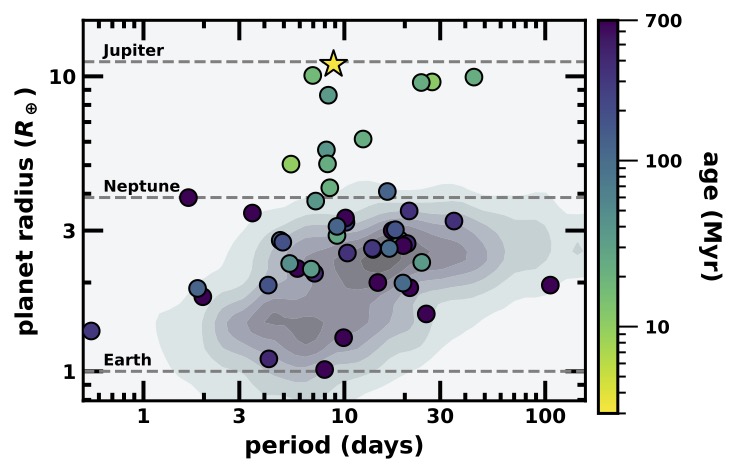
This figure shows the distribution of young planets (points) compared to that of the older population from Kepler. The yellow star is the first planet from the TIDYE survey, a 3 Myr planet with a disk.
Madyson's dog, Halee, is a major contributor to her publications.
Andy is a third-year graduate student and NSF GRFP fellow. He studies the rotation of young and middle-aged stars. He is interested in how we assign ages to stars from their rotation, how we measure rotation from light curves (e.g., from TESS, Kepler, and K2), and what we can learn about stellar clusters/associations from the rotation of their member stars.
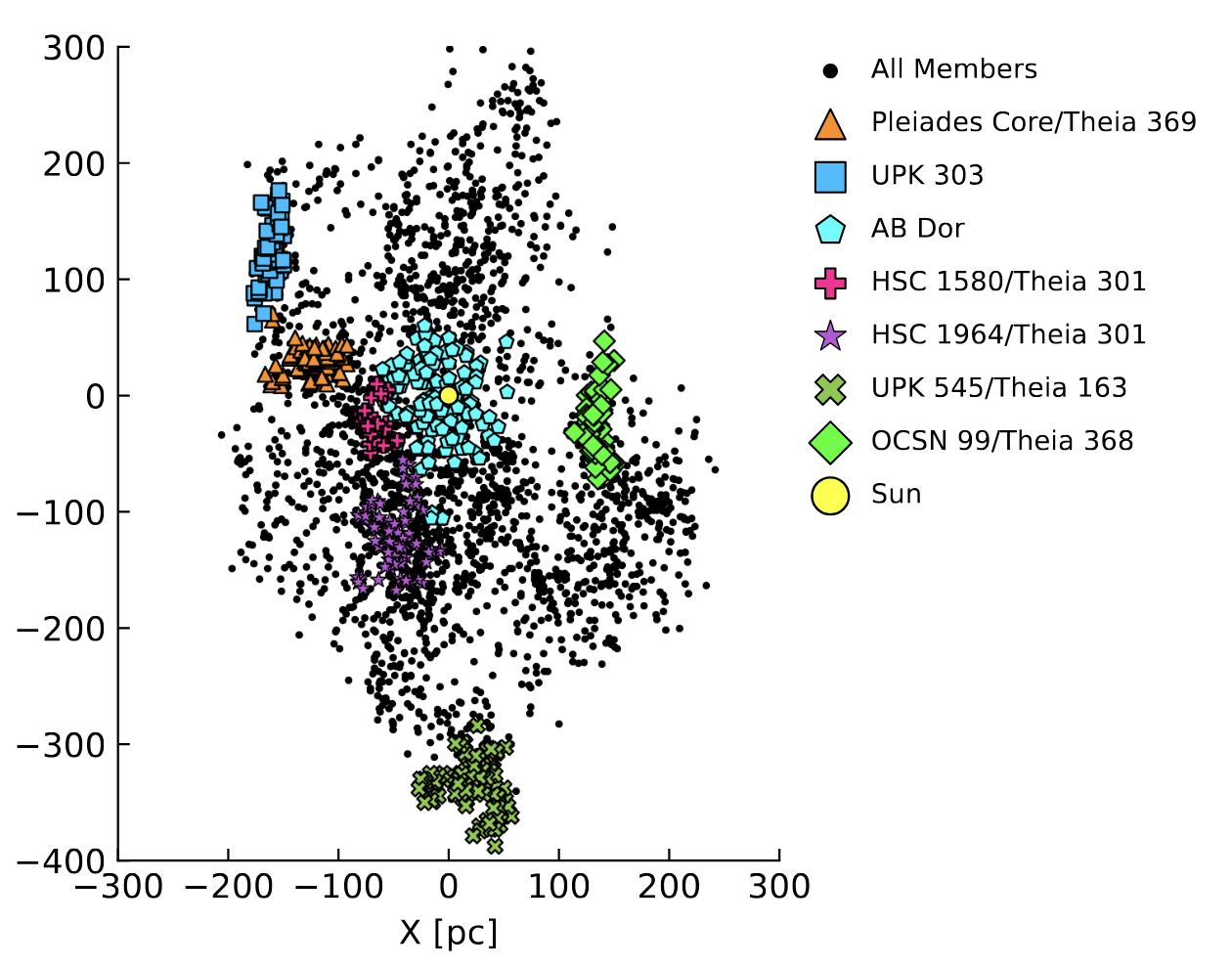
This figure shows the Greater Pleiades Complex - a large collection of stars that likely formed together with the Pleiades and is now spread over more than 500pc. It includes many previously identified stellar associations. This large structure was identified by Andy using rotation as a diagnostic of youth.
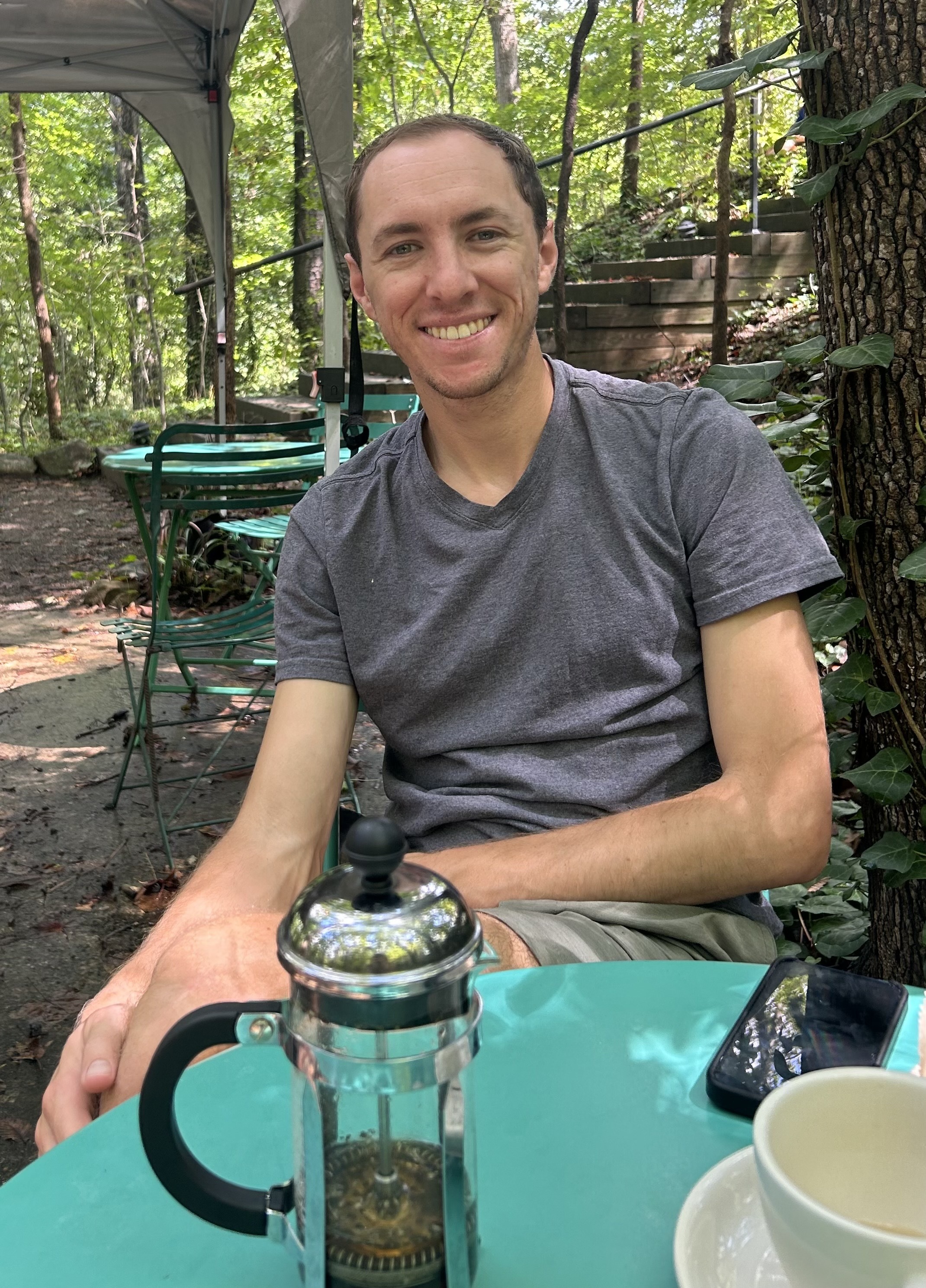
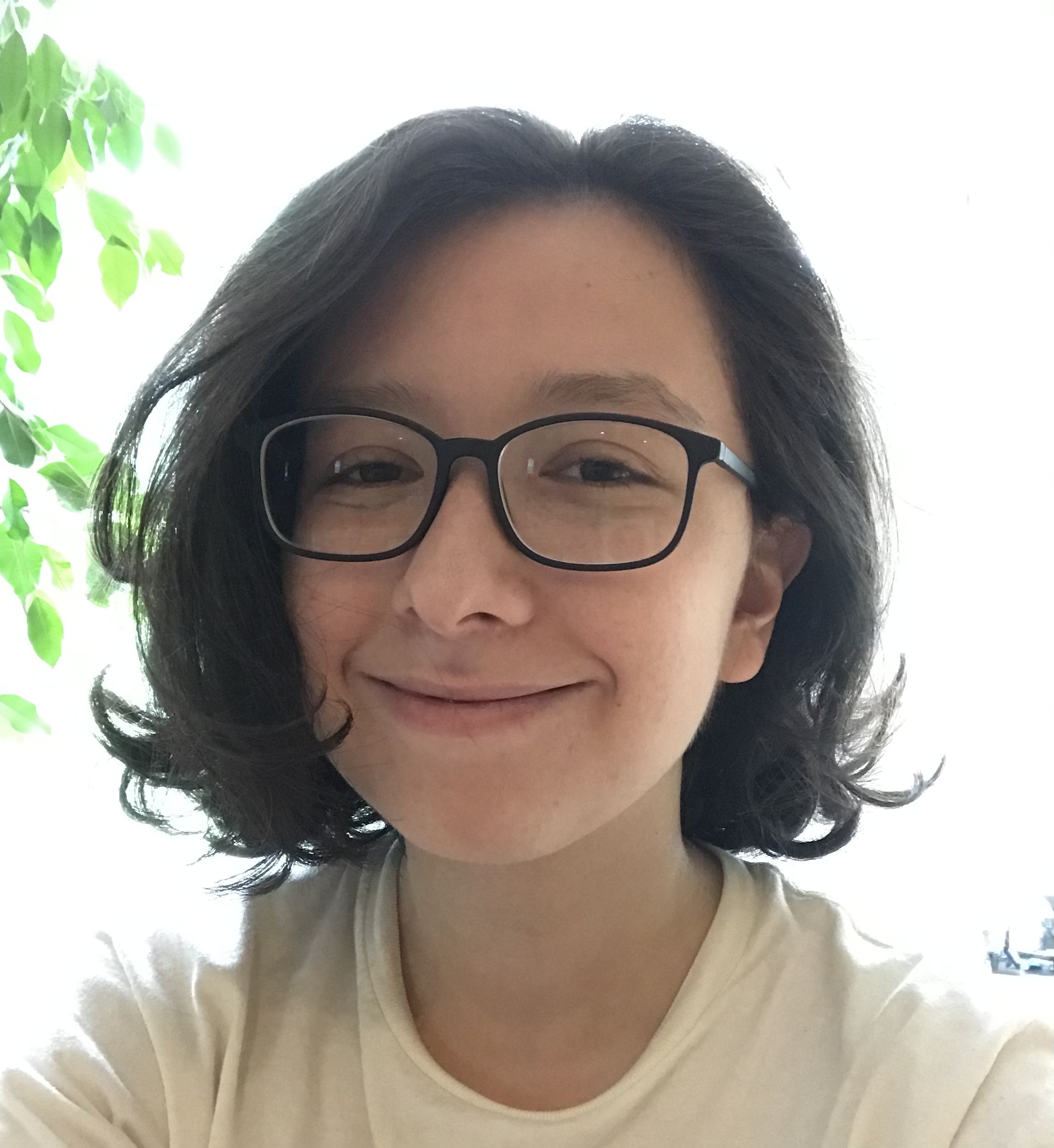
The figure on the right shows the transit times for the innermost planet of a young multi-planet system. Small deviations from the linear ephemeris (dashed line) can be seen. These are transit timing variations, which can be used to learn about the planetary system.
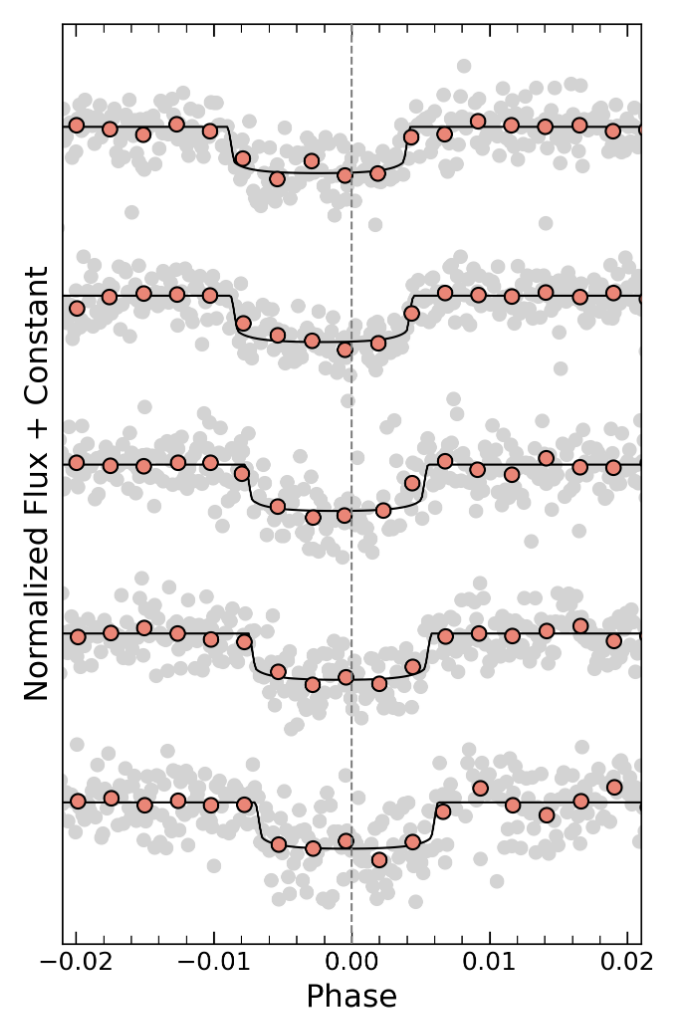

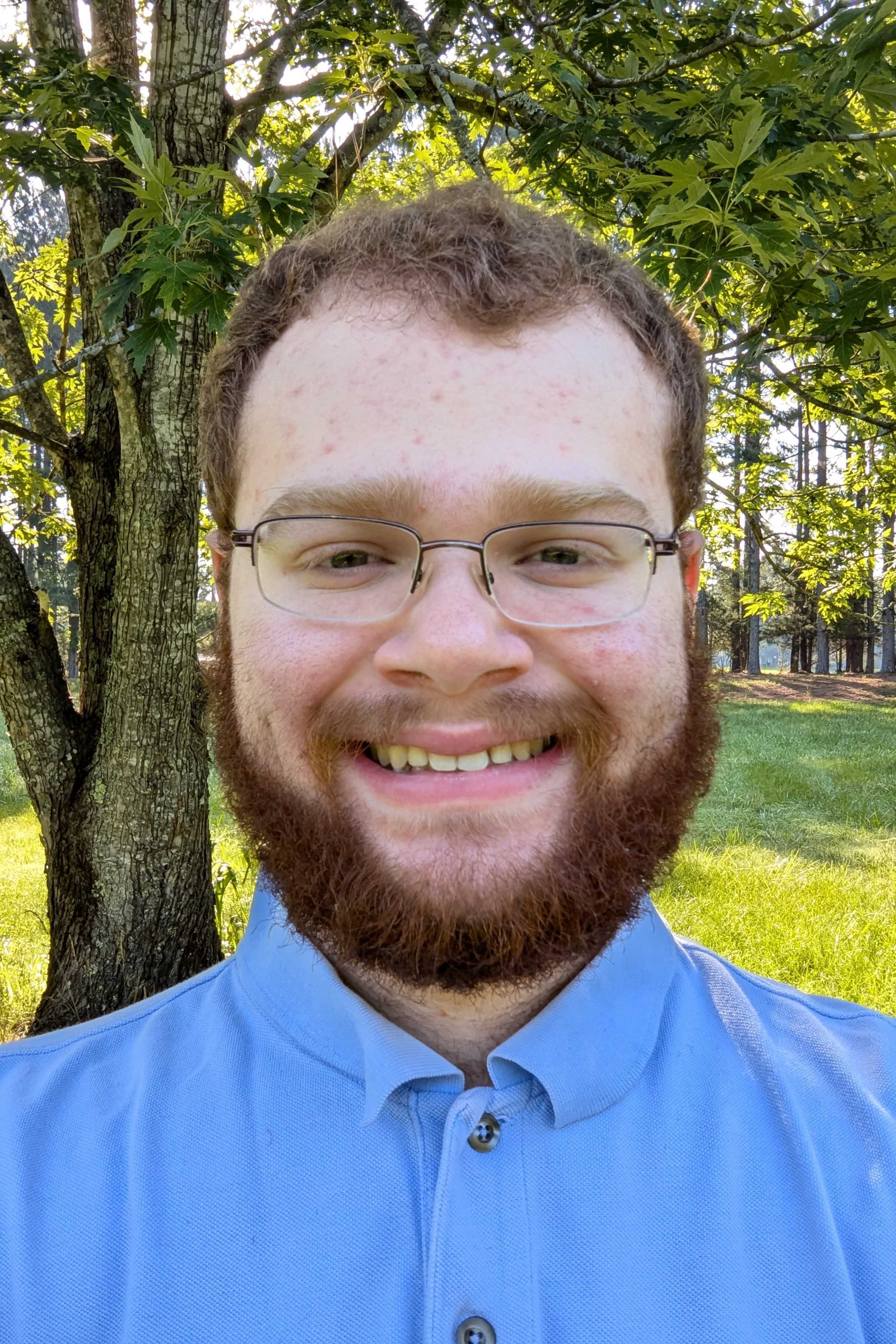
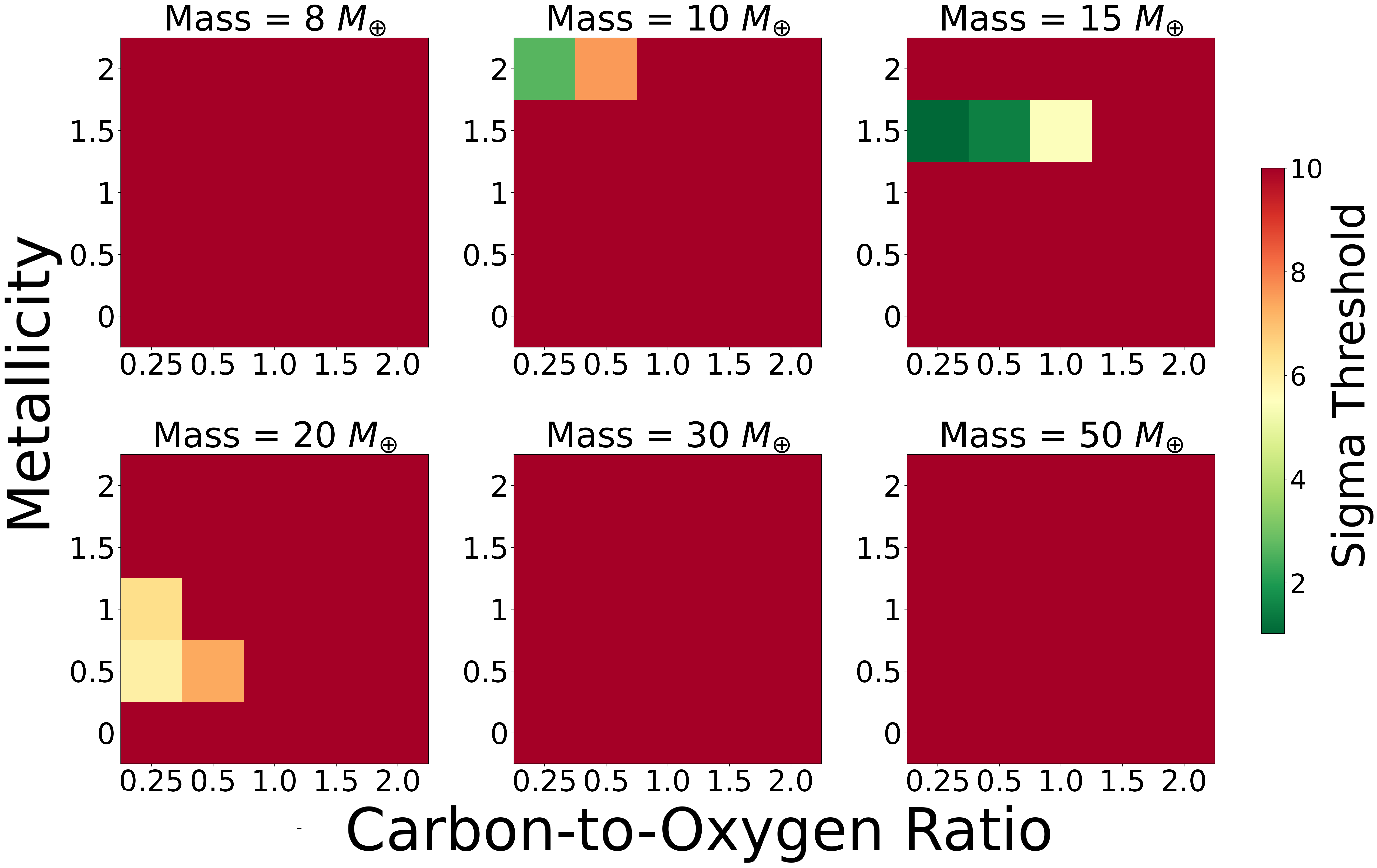
The figure above shows the results of varying mass, metallicity, and C/O ratio in an exoplanet atmosphere and highlights how accurately we can retrieve precise masses from transmission spectra alone.
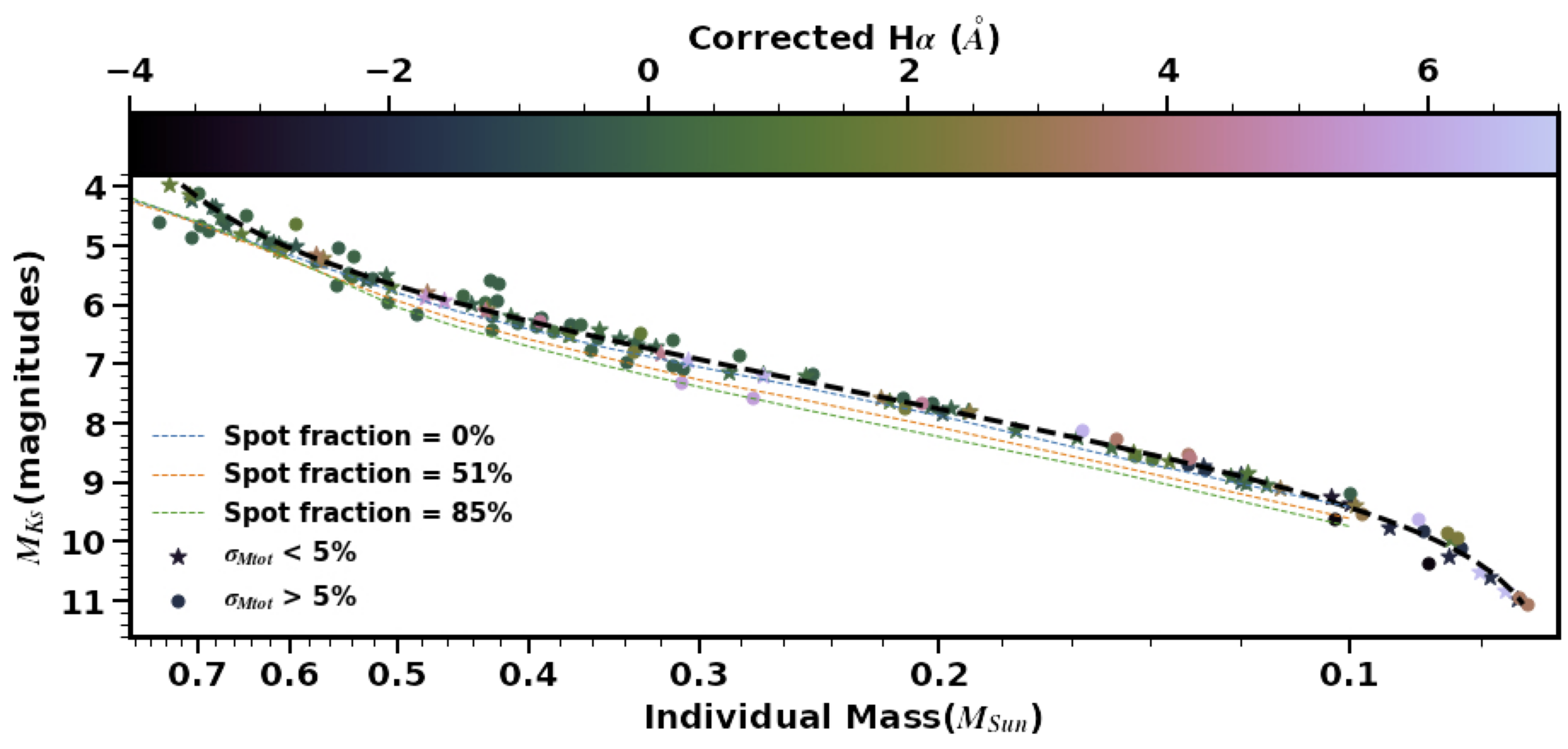 The figure above shows the relation between absolute K magnitude and mass, with points colored by one
activity indicator (Hydrogen Alpha). The effect on the relation is too small to measure.
The figure above shows the relation between absolute K magnitude and mass, with points colored by one
activity indicator (Hydrogen Alpha). The effect on the relation is too small to measure.



The figure above shows a data slice of IRAS 04125+2902 to show how well the triple gaussian explains the overall data.
